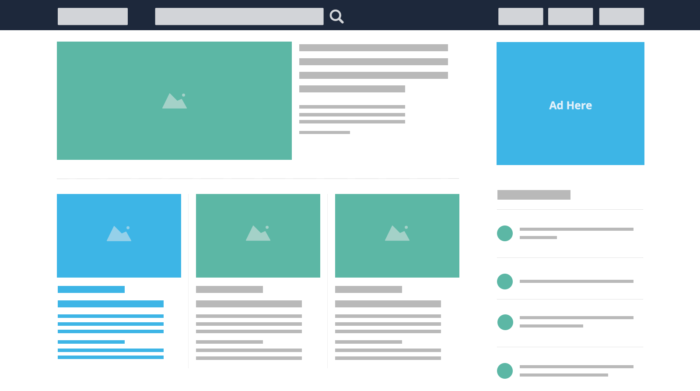What is Native Advertising?
Native advertising is an ad format that imitates the surrounding content/environment. Native ads can deliver relevant, unobtrusive ad content without disrupting the users’ experience. By matching the look and feel of the surrounding organic content, native ads help drive up impressions and improve brand sentiment. They are known for combating “banner blindness.”
Native Advertising Placements and Formats
Because native advertising is designed to blend in with the surrounding environment, native advertising placements range in appearance. This can include:
Carousels, which appear as a slide among others; app walls, which fit in with list-offer views; content walls, for blogs, news sites, and other image-centric layouts; content streams, which work with image-heavy social media sites; and news feed placements, which resemble in-feed news stories. There are also text-only native ad placements, like paid search.

Native Image
One of the humblest of native placements, native image looks a lot like a regular image ad, but the key difference is that the content of the ad can blend in seamlessly with the content of the site on which it appears, making this a relevant, engaging placement.
Native Video
Native video is simply outstream video that has a title, description, and call to action (CTA). Basically, a native element wraps the outstream content. This allows publishers to include video placements among other video content on their site, while giving marketers and advertisers a chance to use high-impact creative that matches the surrounding environment.
Native Rich Media
“Native Rich Media” refers to a native ad placement where the main creative element is rich media (HTML, JavaScript, or MRAID), instead of a static image (.jpeg, jpg, .png). This makes these placements both more eye-catching and more versatile.

What are the Benefits of Native Advertising for Marketers?
The key advantage to native advertising for marketers, advertisers, and DSPs is that native ad content delivers outstanding ROI. Because the ads do not interrupt UX, impressions are high. Native advertising tends to boast high engagement rates, as users are more willing to interact with the ad content. At Smaato, our native placements are completely omnichannel, meaning you can reach audiences and users around the world and on any device to further extend your reach.
What are the Benefits of Native Advertising for Publishers?
Publishers love native advertising placements because they tend to come with high eCPMs. As with any placement with high click through rates, impressions, and engagement, marketers are willing to spend more on this highly effective placement. Plus, native ads are extra user-friendly. Because they blend into your organic content, users will be less likely to bounce, and more likely to stay engaged with your content and your brand.
At Smaato, we allow for more flexibility for publishers; for example, native rich media at Smaato is completely agnostic to all formats, so publishers (and marketers) can enjoy the benefits of native rich media without developing a new placement.
To learn more about Native Advertising, give us a call.
Ready to get started with Native Rich Media?
Download our complimentary overview to see how.




